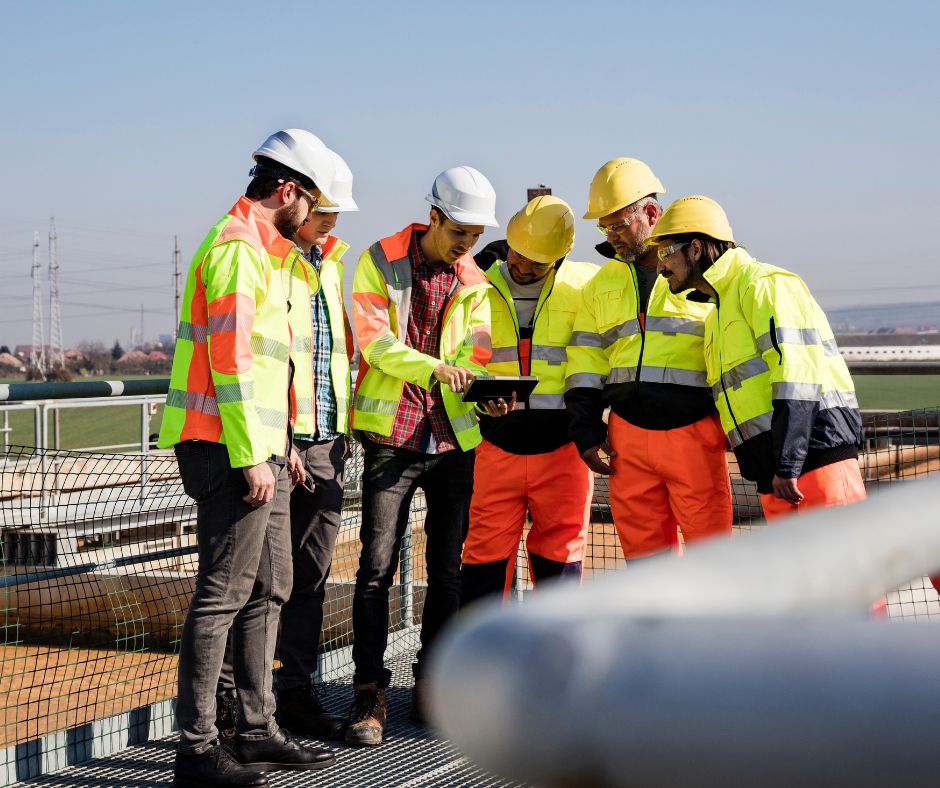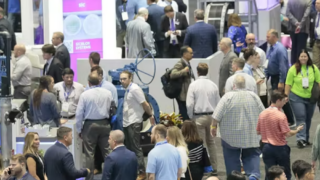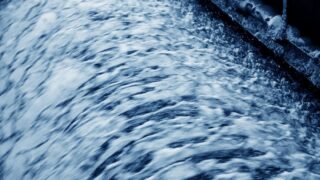Industrial Wastewater Treatment: A Comprehensive Guide to Processes and Systems
Industrial wastewater treatment is a critical process that plays a vital role in protecting our environment and public health. As industries continue to grow and evolve, it becomes increasingly crucial to implement effective treatment processes to mitigate the harmful impacts of industrial wastewater.
In this comprehensive guide, we will explore the industrial wastewater treatment process and various systems, highlighting their importance, regulatory requirements, and how you can use the latest advancements such as the Transcend Design Generator in the field.
Understanding Industrial Wastewater
Definition and Sources of Industrial Wastewater
Industrial wastewater refers to the contaminated water generated during industrial processes across various sectors such as manufacturing, mining, power generation, natural gas processing plants, and chemical plants. This wastewater typically contains a diverse range of pollutants, including organic and inorganic compounds, heavy metals, suspended solids, and pathogens.
The sources of industrial wastewater vary depending on the industry, but common contributors include the manufacturing production process, cooling and boiler systems, rinsing and cleaning processes, and wastewater from research and development laboratories.
Common Contaminants Found in Industrial Wastewater
Industrial wastewater can contain a multitude of contaminants, each requiring specific treatment methods. Common pollutants found in industrial wastewater include:
- organic compounds (such as oils, solvents, and pesticides),
- heavy metals (lead, mercury, cadmium, etc.)
- acids and alkalis
- suspended solids,
- and nutrients like nitrogen and phosphorus.
Understanding the composition of wastewater contaminants is crucial for designing effective treatment processes.
Environmental Impacts of Untreated Industrial Wastewater
Negative Effects on Ecosystems and Water Bodies
When industrial wastewater is discharged into natural water bodies without proper treatment, it can have severe ecological consequences. The presence of toxic substances and excessive nutrients can disrupt aquatic ecosystems, leading to oxygen depletion, eutrophication, and the death of aquatic plants and animals.
Additionally, the release of high-temperature wastewater can alter the natural thermal balance, further harming sensitive species.
Health Risks for Humans and Wildlife
Untreated industrial wastewater poses significant health risks to both humans and wildlife. Contaminants present in the wastewater can find their way into the food chain, accumulating in products of plant or animal origin consumed by humans.
Exposure to these pollutants can lead to various health issues, including respiratory problems, organ damage, neurological disorders, and even cancer.
Wildlife living near contaminated water bodies are also susceptible to similar risks.
Industrial Wastewater Treatment Goals and Regulations
Objectives of Industrial Wastewater Treatment
The primary goals of the industrial wastewater treatment plant are to remove or reduce pollutants from the waste stream to acceptable levels before discharge into the environment or reuse within the industrial facility. The specific treatment objectives vary depending on the industry, local regulations, and the desired quality of the treated effluent.
Common treatment goals include the removal of:
- suspended solids
- organic matter
- nutrients
- heavy metals
- and toxic compounds.
The treatment process may also focus on disinfection to ensure the absence of harmful pathogens.
Relevant Environmental Regulations and Standards
Industrial wastewater treatment is subject to various environmental regulations and standards imposed by local, regional, and national authorities, such as EPA’s National Pollutant Discharge Elimination System (NPDES). These regulations outline discharge limits, effluent quality standards, and monitoring requirements to ensure compliance and protect the environment and public health.
Adhering to these regulations is essential for industries to avoid penalties, legal issues, and reputational damage. Transcend Design Generator can help asset owners and utilities evaluate treatment options of their wastewater treatment plants in alignment with these regulations during the capital planning stage, ensuring seamless and compliant industrial wastewater treatments.
Preliminary Treatment Processes
Screening and Flow Equalization
The preliminary treatment stage involves the removal of large objects, debris, and grit through the use of screens, grates, and sedimentation tanks. This process prevents damage to downstream equipment and helps in optimizing subsequent treatment processes.
Flow equalization is another important preliminary treatment step that balances peak wastewater flow rates and minimizes hydraulic and organic shock loads on the treatment system. It involves the use of storage tanks to equalize and regulate the flow of wastewater, ensuring more consistent treatment performance.
Oil-Water Separation Techniques
Many industrial processes produce oily wastewater, which requires specialized techniques for effective separation. Oil-water separators, using various methods such as gravity separation, coalescence, and flotation, remove oils and grease from the wastewater. These techniques facilitate the recovery of oil for reuse or proper disposal, while the treated wastewater can proceed to further treatment stages.
Primary Treatment Processes
Sedimentation
Primary treatment involves the removal of settleable solids and suspended organic matter through sedimentation processes. Wastewater is held in large settling tanks, allowing heavy particles to settle to the bottom as sludge, while scum and lighter particles float to the surface for removal.
Sedimentation is a critical step for reducing the organic load and solids content in the wastewater, making it easier to treat in subsequent stages. The resulting sludge is further treated separately to extract any valuable components and reduce its volume for disposal.
Dissolved Air Flotation (DAF)
Dissolved Air Flotation (DAF) is an alternative primary treatment process used in certain industries to remove fine suspended solids and oils. It involves injecting air into the wastewater under pressure, creating small bubbles that attach to the particles, causing them to float to the surface. The floating particles are then skimmed off, leaving behind clarified wastewater.
DAF is particularly effective for treating wastewater with high oil and grease content or when rapid solids separation is required. A study by Chu et al. shows that DAF is more effective for removing disinfection by-products, nitrogenous disinfection by-products, and carbonaceous disinfection by-products compared to inclined plate sedimentation.
By incorporating Transcend Design Generator, asset owners and utilities can assess the feasibility and suitability of DAF for their specific wastewater treatment needs.
Secondary Treatment Processes
Activated Sludge Process
The activated sludge process is one of the most widely used secondary treatment methods for industrial wastewater. In this process, microorganisms, predominantly bacteria, are introduced to the remaining waste sludge, creating an environment for biological processes such as the breakdown of organic matter.
The wastewater and the activated sludge mixture are aerated to provide the necessary oxygen for the microorganisms to thrive. As the microorganisms consume the organic pollutants, they form flocs that settle in a separate clarifier tank. The clarified water can then proceed to further treatment or discharge.
Trickling Filters and Rotating Biological Contactors (RBCs)
Trickling filters and rotating biological contactors (RBCs) are biological treatment processes that use fixed-film systems to promote the growth of microorganisms. Trickling filters consist of a bed of media, while RBCs consist of a series of rotating discs, both serving as surfaces for microbial attachment.
Wastewater is distributed over the media or discs, allowing the microorganisms to degrade organic matter as it passes through. The treated wastewater is then separated from the biofilm and directed to subsequent treatment stages.
The selection of secondary treatment processes depends on factors such as the strength of wastewater contaminants, available space, and the desired treatment efficiency.
Advanced Treatment Processes
Membrane Filtration (Microfiltration, Ultrafiltration, Nanofiltration, and Reverse Osmosis)
Membrane filtration processes, including microfiltration (MF), ultrafiltration (UF), nanofiltration (NF), and reverse osmosis (RO), are used for advanced treatment and removal of fine particles, dissolved solids, and specific contaminants.
MF and UF employ porous membranes to physically separate suspended solids, bacteria, and some macromolecules from the wastewater. NF and RO, on the other hand, utilize semipermeable membranes that can selectively remove ions, smaller molecules, and dissolved organic matter.
These membrane-based processes offer high-quality effluent suitable for reuse or strict discharge standards. However, the selection of the appropriate membrane filtration technique depends on the desired treatment objectives, feedwater quality, and operational considerations.
Biological Nutrient Removal (BNR)
Biological Nutrient Removal (BNR) processes are employed to reduce the levels of nutrients, such as nitrogen and phosphorus, in industrial wastewater. BNR utilizes specific microbial populations that can uptake and convert these nutrients into less harmful forms.
The process typically involves anoxic and aerobic zones, allowing different microbial reactions to occur. In the anoxic zone, denitrifying bacteria convert nitrates to nitrogen gas, reducing nitrogen content. In the subsequent aerobic zone, phosphorus-accumulating organisms remove phosphorus through uptake and storage.
BNR is particularly important in industries where nutrient discharges can lead to eutrophication and ecological imbalance in receiving water bodies. Generative design software such as Transcend Design Generator can help with better project management and product design such as assessing the feasibility of BNR processes and optimizing the design for specific wastewater treatment projects.
Tertiary Treatment Processes
Chemical Coagulation and Flocculation
Tertiary treatment processes aim to further enhance the removal of residual contaminants, fine suspended solids, and dissolved substances. Chemical coagulation and flocculation are commonly employed during this stage to facilitate the formation of larger particles that can be more effectively removed.
Coagulants such as aluminum or iron salts are added to the wastewater, causing destabilization and aggregation of particles. Flocculants are then introduced to promote the formation of larger flocs. The floc particles settle more readily or can be removed through filtration, leading to higher-quality effluent.
Granular Activated Carbon (GAC) Adsorption
Granular Activated Carbon (GAC) adsorption is another tertiary treatment technique used to remove trace organic compounds, taste and odor-causing substances, and residual contaminants. Wastewater is passed through a bed of activated carbon, where adsorption takes place, effectively trapping the target compounds onto the carbon surface.
GAC adsorption is particularly effective for industries that generate wastewater with high concentrations of organic contaminants or require advanced treatment for the removal of specific substances.
Disinfection Techniques

Chlorination and Dechlorination
Disinfection is a crucial step to eliminate harmful pathogens and ensure the microbiological safety of the treated wastewater. Chlorination, the most commonly used disinfection method, involves the addition of chlorine-based compounds (such as chlorine gas or sodium hypochlorite) to kill bacteria, viruses, and other microorganisms.
To ensure the removal of residual chlorine, dechlorination is performed using chemicals such as sulfur dioxide or sodium bisulfite. Dechlorination is necessary to prevent potential harm to aquatic life when the treated wastewater is discharged into receiving water bodies.
UV Disinfection
UV disinfection is an alternative method to chlorination, utilizing ultraviolet light to inactivate microorganisms. Wastewater is exposed to UV light, which damages the DNA of bacteria, viruses, and protozoa, rendering them unable to reproduce.
UV disinfection offers several advantages, including the absence of chemical handling and reduced disinfection by-product formation. It is commonly used in industries where chlorine residuals are undesirable or restricted, such as food and beverage production.
Sludge Treatment and Disposal
Sludge Dewatering
Throughout the wastewater treatment process, sludge is generated as a by-product. Sludge dewatering aims to reduce the volume and moisture content of sludge for easier handling and disposal. Various techniques, such as mechanical dewatering (e.g., centrifuges, belt presses) and thermal drying, are employed to achieve this.
Dewatered sludge can be further treated or processed for beneficial use, such as composting, land application, or energy recovery through anaerobic digestion or incineration.
Sludge Incineration and Land Application
In some cases, sludge incineration is employed as a means of sludge disposal. Incineration offers thermal destruction of organic matter, reducing sludge volume and eliminating potential pathogens. Advanced incineration technologies also allow for the recovery of energy from the combustion process.
Another sludge disposal option is a land application, where treated sludge is applied to agricultural or reclamation land. This can provide valuable nutrients and organic matter to improve soil quality. However, proper monitoring and adherence to regulatory guidelines are essential to ensure the protection of soil and groundwater.
Industrial Wastewater Treatment Systems
Centralized and Decentralized Systems
Industrial wastewater treatment systems can be categorized into centralized or decentralized systems, depending on the scale, location, and specific requirements of the industry.
Centralized systems involve the collection of wastewater from multiple sources within an industrial complex or region and its conveyance to a centralized treatment facility. This approach offers economies of scale, centralized monitoring and control, and the potential for resource recovery. However, it requires extensive infrastructure and transport networks.
Decentralized systems, on the other hand, treat wastewater at or near the source of generation. They are often employed when industrial facilities are geographically dispersed or when local discharge regulations are stringent. Decentralized systems can be modular and flexible, offering opportunities for process optimization and reduced infrastructure costs.
Comparison of Physical, Biological, and Chemical Treatment Systems
Industrial wastewater treatment systems can utilize physical, biological, and chemical treatment processes, either individually or in combination, to achieve the desired effluent quality.
Physical treatment processes involve the removal of suspended solids, oils, and grease through methods such as screening, sedimentation, and filtration. Biological treatment processes harness the power of microorganisms to biodegrade organic matter and nutrients. Chemical treatment processes utilize coagulants, flocculants, and disinfectants to remove contaminants or enhance the efficiency of other treatment stages.
The selection of treatment systems depends on the wastewater characteristics, treatment objectives, available space, and regulatory requirements. As a generative design tool, Transcend Design Generator empowers asset owners and engineers to evaluate various treatment options and determine the most suitable combination for their specific needs.
Factors Influencing Treatment System Selection
Type and Strength of Wastewater Contaminants
The type and strength of wastewater contaminants greatly influence the selection of treatment systems. Industries producing wastewater with high concentrations of specific pollutants may require specialized treatment processes or additional treatment stages.
Understanding the composition and concentration of contaminants through comprehensive characterization studies is crucial for designing an effective and efficient treatment system.
Site-Specific Considerations and Limitations
Site-specific considerations and limitations play a significant role in determining the feasibility and design of industrial wastewater treatment systems. Factors such as available space, local infrastructure, water availability, discharge regulations, and environmental impact assessments must be taken into account.
Transcend Design Generator incorporates these site-specific factors into the evaluation process, providing asset owners, designers, and engineers with a comprehensive understanding of the opportunities and constraints associated with their industrial wastewater treatment projects.
Monitoring and Control in Industrial Wastewater Treatment
Continuous monitoring and control are essential for the optimal operation of industrial wastewater treatment systems. Real-time data on key parameters such as flow rates, pollutant concentrations, and treatment performance enable operators to make informed decisions and take corrective actions when necessary.
Advanced smart technologies, including sensors, automated control systems, and data analytics, enhance process efficiency, reduce operational costs, and ensure compliance with regulatory standards.
We emphasize the importance of incorporating monitoring and control strategies and technologies in the design and operation of industrial wastewater treatment systems.
Energy Efficiency and Sustainability in Industrial Wastewater Treatment
Efficient energy utilization and sustainability are crucial considerations in modern industrial wastewater treatment. Energy-intensive processes, such as aeration, require careful optimization to minimize energy consumption. Implementing energy-saving measures, such as variable speed drives, energy recovery systems, and process optimization algorithms, can significantly reduce energy costs and environmental impact.
Moreover, incorporating renewable energy sources, such as solar or biogas, into the treatment system can further enhance sustainability and reduce embedded carbon footprint.
Transcend Design Generator facilitates the evaluation of energy-efficient designs and the integration of renewable energy technologies, allowing you to prioritize energy efficiency and sustainability in their industrial wastewater treatment projects.
Future Trends in Industrial Wastewater Treatment
Industrial wastewater treatment is continuously evolving, driven by advancements in technology, increasing regulatory requirements, and the shift toward a circular economy. Several future trends are shaping the industry and influencing the development of new treatment processes and approaches.
Advancements in Technology and Processes
Emerging technologies, such as advanced oxidation processes, electrochemical treatment, and hybrid treatment systems, offer new opportunities for enhanced contaminant removal, resource recovery, and energy efficiency. Continued research and development in these areas are likely to lead to innovative and more sustainable treatment solutions.
Circular Economy Approaches for Wastewater Management
The concept of the circular economy, which aims to minimize waste generation and maximize resource recovery, is gaining traction in the wastewater management sector. Reusing treated wastewater for industrial processes or agricultural irrigation, extracting valuable resources from wastewater, and utilizing sludge as a source of energy or nutrient-rich fertilizer are key components of the circular economy approach.
The integration of circular economy principles into industrial wastewater treatment promotes sustainability, reduces environmental impact, and creates economic opportunities.
Summary
The importance of industrial wastewater treatment cannot be overstated. By investing in effective treatment processes and systems, industries can mitigate environmental impacts, protect ecosystems, and contribute to a more sustainable future. Let us partner with you on your industrial wastewater treatment journey and make a positive impact together.
With our expertise and innovative solution, Transcend Design Generator, we enable you to design efficient, sustainable, and compliant industrial wastewater treatment systems.







